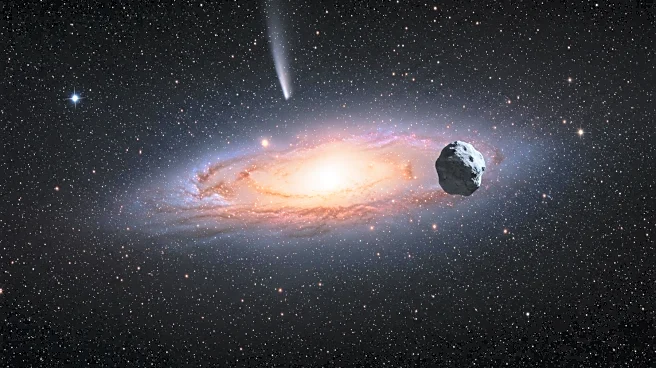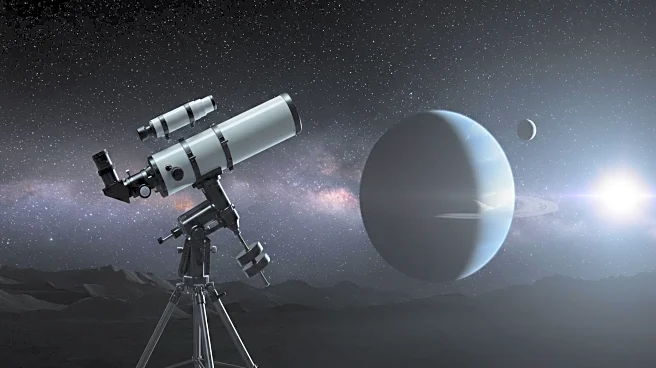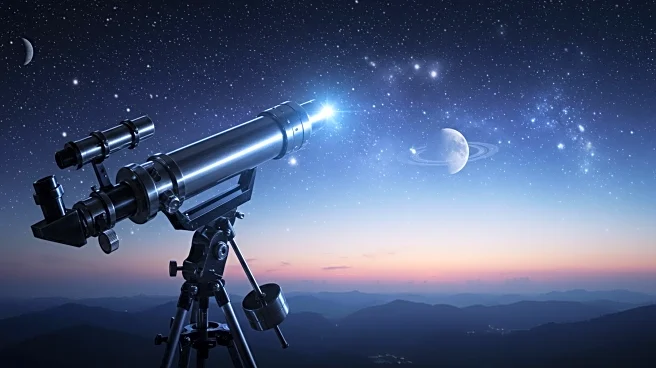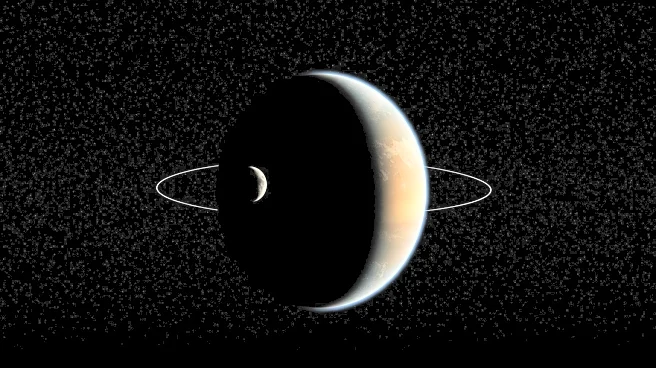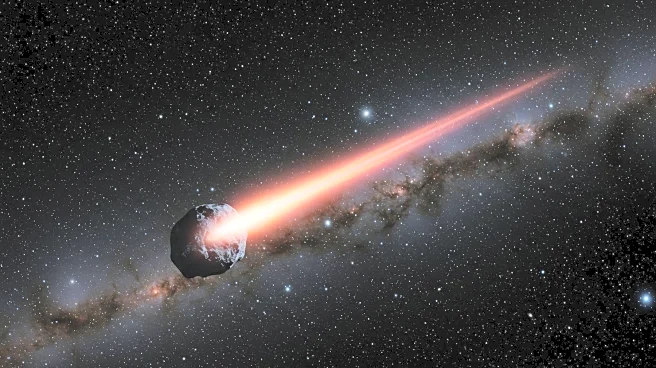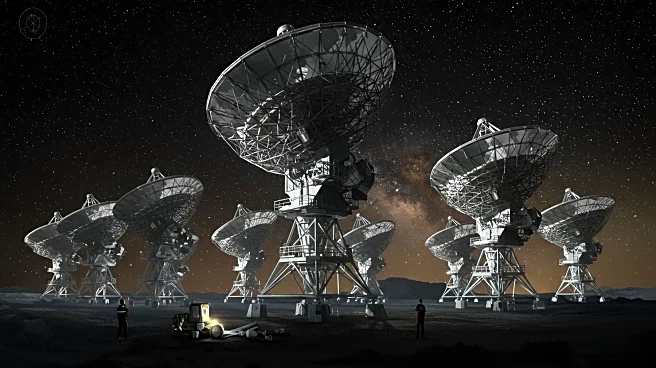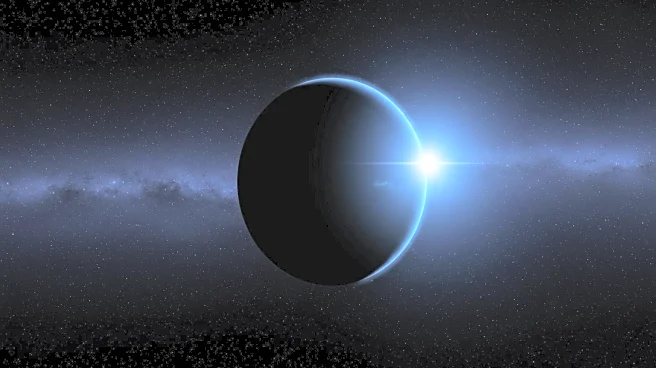Rapid Read • 7 min read
NASA has released a new composite image combining X-ray and radio data to showcase the pulsar B1509-58 and its surrounding nebula, MSH 15-52. The pulsar, a rapidly spinning neutron star, generates a nebula that resembles a human hand. This image, created using data from NASA's Chandra X-ray Observatory and the Australia Telescope Compact Array, provides insights into the pulsar's powerful electromagnetic properties and the nebula's intricate structure. The nebula spans over 150 light-years and is formed by energetic particles driven by the pulsar's rotation and magnetic field.
AD
This new image enhances understanding of pulsars and their role in cosmic phenomena. Pulsars are crucial for studying the dynamics of neutron stars and the effects of their magnetic fields. The detailed view of MSH 15-52 offers valuable data for astronomers exploring the interactions between pulsar winds and supernova remnants. Such research can contribute to broader astrophysical knowledge, including the lifecycle of stars and the formation of nebulae. The findings may also inform future studies on the behavior of electromagnetic fields in space.
Further analysis of the composite image will likely lead to new discoveries about the pulsar and its nebula. Researchers may focus on understanding the unique features of MSH 15-52 and RCW 89, exploring the interactions between pulsar winds and surrounding hydrogen gas clouds. Continued observations using advanced telescopes could provide deeper insights into the mechanisms driving these cosmic structures. Collaborative efforts among international astrophysics institutions may expand the scope of research and enhance the understanding of pulsar-related phenomena.
AD
More Stories You Might Enjoy




